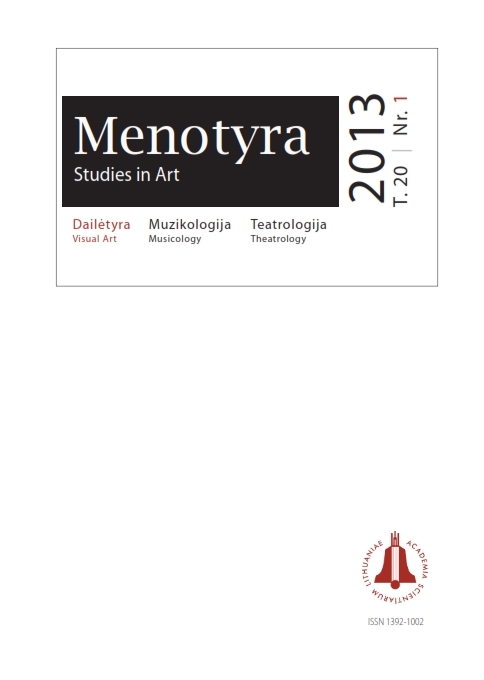Sukurti „lietuvišką madą“
Creating “Lithuanian fashion”
Author(s): Teresė JurkuvienėSubject(s): Cultural history, Visual Arts, Sociology of Art
Published by: Lietuvos mokslų akademijos leidykla
Keywords: Lithuanian fashion; fashion; national costume; Marta Raišukytė
Summary/Abstract: The author of the present paper analyses the attempts to build the phenomenon of national fashion in the first half of the 20th century and design clothes for daily wear combining the modern tendencies in fashion and those traditional elements of the 19th century village wear and national costume that were considered valuable.Having reached Lithuania at a rather unfavourable time, the idea of national fashion found a society which was not ready to accept these innovations and which lacked professional artists who would be able to design such garments and women of the higher classes who would be willing to wear them. The project of “women’s linen” by Marta Raišukytė was the only one that could be compared with the movements of “reform clothes” that took place in America and Europe some time earlier, the creation of modernized traditional garments in the Northern European countries, or Landhausmode that took root in Germany a long time ago. The planned contemporary clothing for Lithuanian women had to be distinct from the national costume worn at that time and be far more modern and practical. However, the project was not put into life partly because it did not reach the stage of concrete drawings and attractive samples and partly because of the nature of the idea itself – the aesthetics based on the quite peculiar ideas of Vydūnas’s philosophy and a large gap from the prevailing fashion tendencies in Europe.In the interwar period the attempts to create “Lithuanian fashion” were revived again. In the 1920s and 1930s there was a great deal of discussion in the press, particularly in magazines for women and Catholic youth, about the necessity of this kind of fashion, its ideological basis, and its relation with traditional village wear and modern fashion. Before long an opinion gained ground that “Lithuanian fashion” should be a version of modern city fashion adapted for the needs of village residents and supplemented with the elements of traditional folk garments, which had still retained their attractiveness. However, it was not until the second half of the 1930s that such clothes began to be modelled, and even then it was limited to projects of amateur clothes making promoted in the circles and periodical publications of young farmers.In both periods of creating “Lithuanian fashion”, home-woven textiles and local materials were considered the most important element that could be adopted from traditional folk garments. This approach was based, particularly in Raišukytė’s case, on the idea of “Lithuanian spirit” preserved in village textiles and no less on the economic reasons. Having become common, this approach may have had some influence on the concept of the national costume developed by Antanas Tamošaitis in the 1930s.
Journal: Menotyra
- Issue Year: 20/2013
- Issue No: 1
- Page Range: 67-79
- Page Count: 13
- Language: Lithuanian

